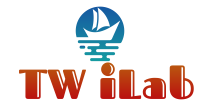Access management software helps to control user access to data, systems, and services to help secure organizations against security breaches. It also allows administrators to audit user activity and automate compliance tasks.
In addition, it ensures that users are authenticated and have the proper permissions levels. Therefore, it is essential for protecting private data and meeting industry regulations.
Authentication
Access management software is a crucial component of an IT security strategy that helps protect data, applications, and systems by tightly controlling user access to those resources. These solutions use various authentication techniques to verify the identity of an authorized user and permit them to access those resources.
Authentication involves users entering their credentials and then being verified by the system to ensure they are who they say they are. During this process, credentials are compared with those on file in an ID repository.
Some popular authentication methods include user ID and password, multifactor authentication (MFA), and public key authentication. These methods ensure that only legitimate people can access systems and provide a more convenient way for users to log in to applications.
Other authentication methods include time-based access, geolocation, and device identity. These methods are an excellent way to supplement the primary authentication factors but need help to verify someone’s identity thoroughly.
Many IAM tools are also built with features to help employees manage their access to systems and applications. For example, it helps prevent employee password sprawl and increases security by reducing the chance that users will share their usernames and passwords with anyone else. These tools also allow for easy modification of access rights so that employees with the same job titles can have different privileges to access systems and applications.
Permissions
Managing user access is essential for ensuring the security of business data and systems. It involves granting users the proper permissions to access different services or applications while preventing unauthorized access.
A sound system will allow you to easily define and monitor the right permissions for all your users, folders, projects, and files. It can also help you set up automated permissions that automatically assign new employees to their specific roles and give them their access rights before they start working for the company.
Most systems have a “User Management” chart that lets you see all your existing users, including those not invited to use the system. You can also view and adjust the users’ access levels from this chart.
You can create a “Read-Only” access role for users who can only view files. Then, for those who need more advanced access to specific files and folders, you can grant them the “Full Access” role to edit or change permissions.
Some access management systems have a “controlled admin” feature that allows you to control what functions each system administrator can perform at an itemized level. It is beneficial if you have multiple system administrators on your team and want to ensure each has the right permissions for their role.
Auditing
When you use an access management tool, you want to have good visibility into everyone’s access rights and how they are granted. It helps with accurate access granting, good reports, compliance, and more.
In addition to monitoring users’ permissions, access management software should also be able to track user activity and provide auditing reports. These reports are critical to helping administrators show that their data security policies comply with industry regulations like HIPAA and PCI DSS.
For example, access rights software should be able to generate reports showing users’ changes to files, mailboxes, and calendars. In addition, it helps you meet the requirements of regulatory audits, which typically require that user access records be stored for a while.
Some solutions offer visualization features that show at-a-glance permissions relationships on maps or tree structures, making it easier to see who has what access. These features can also help catch “privilege creep,” where users might gain privileges beyond what they need.
In addition, some tools are specifically designed for managed service providers (MSPs) to work the access rights of their clients across multiple sites and cloud servers. It benefits a business with many different access rights systems.
Compliance
Regulatory compliance is one of the most challenging difficulties that organizations face, particularly in the age of GDPR and PSD2. All companies, even small ones, must comply with specific rules and regulations.
Fortunately, access management software can help you stay compliant by making it easier to assign and control user access to systems and files. In addition, these tools reduce the risk of error and ensure that IT privileges are constantly updated, increasing organizational security.
Relying on manual tools for user management can lead to errors and slow IT operations to a crawl. Still, with automated capabilities, you can scale your efforts to meet growing business needs without compromising security. Features like role-specific templates make provisioning faster and more accurate, while automatic audit reports cut the time it takes to gain insight into security issues.
Privileged access management (PAM) is a core element of most IAM solutions, limiting the type and level of access that users can have to resources. In addition, it allows for improved protection against malware and other threats, such as a former employee using old credentials to access corporate resources.
Most IAM software also offers features for evaluating and managing compliance. These include a web-based whistleblowing system for employees to report misconduct and an approval manager that handles requests for gifts or invitations.



